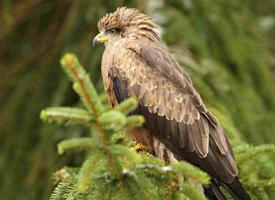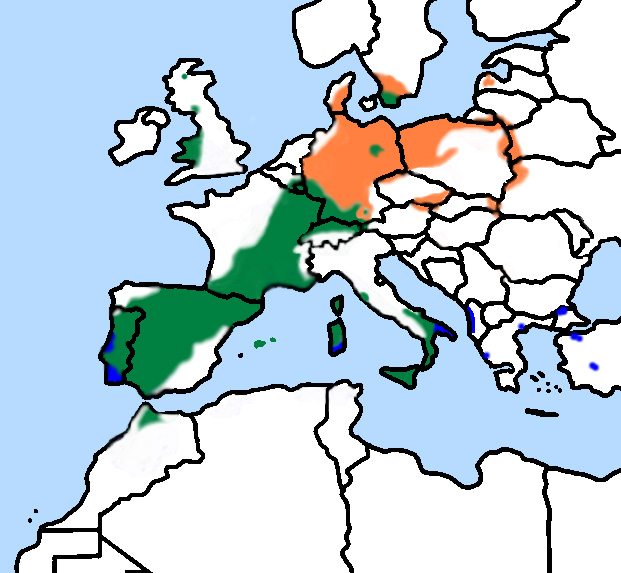
Állatleírás
The Red Kite (Milvus milvus) is a strikingly beautiful bird of prey that belongs to the Accipitridae family, which includes hawks, eagles, and other kites. Known for its distinctive reddish-brown body, long wings, and deeply forked tail, the Red Kite is an impressive sight in the skies. This medium-sized raptor has a wingspan that can reach up to 175 cm (69 inches), allowing it to glide effortlessly on air currents.One of the most notable features of the Red Kite is its coloration. The bird's upper parts are predominantly a reddish-brown, while the head and neck tend to be a paler grey. The underparts are lighter, with a streaked pattern that provides excellent camouflage in its natural habitat. The tail, which is perhaps the bird's most distinctive feature, is deeply forked and provides both stability and maneuverability in flight.
Red Kites are highly adaptable birds and can be found in a variety of habitats, including open woodlands, farmland, and even on the edges of urban areas. They are primarily scavengers, feeding on carrion and refuse, but they also hunt small mammals, birds, and insects. Their diet flexibility has been a key factor in their survival and adaptation to changing landscapes.
Historically, the Red Kite faced significant persecution and habitat loss, leading to a drastic decline in its population. By the 20th century, the species was on the brink of extinction in many parts of Europe. However, thanks to concerted conservation efforts, including legal protection, reintroduction programs, and habitat management, the Red Kite has made a remarkable comeback in several regions. It is now a conservation success story, with stable or increasing populations in many of its range countries.
Red Kites are known for their aerial displays, especially during the breeding season. They perform a variety of acrobatic maneuvers, including steep dives, rolls, and loop-the-loops. These displays are not only a means of communication between mates but also a way to establish territory.
The breeding season for Red Kites typically begins in March or April. They are monogamous birds, often forming long-term pair bonds. Nests are usually built in tall trees and are made from sticks and lined with grass and wool. The female lays between 1 and 3 eggs, which are incubated for about 30 to 32 days. Both parents are involved in raising the offspring, which fledge around 50 to 70 days after hatching.
Despite its recovery in many areas, the Red Kite still faces threats from illegal poisoning, collisions with power lines, and habitat degradation. Continued conservation efforts are essential to ensure the long-term survival of this magnificent bird of prey.
In summary, the Red Kite is a symbol of wildlife conservation success, embodying the beauty and resilience of nature. Its presence enriches the biodiversity of its habitats, and its recovery serves as a beacon of hope for the conservation of other threatened species.
Előfordulási térkép

Hasonló állatok
Új állatfotók
Top 10 állat
- Dolphin gull (Leucophaeus scoresbii)
- Japanese macaque (Macaca fuscata)
- Stone loach (Barbatula barbatula)
- Galápagos tortoise (Geochelone nigra complex)
- Russian tortoise (Testudo horsfieldii)
- Diana monkey (Cercopithecus diana)
- Greek tortoise (Testudo graeca)
- Common flying dragon (Draco volans)
- Moustached guenon (Cercopithecus cephus)
- Galápagos penguin (Spheniscus mendiculus)


